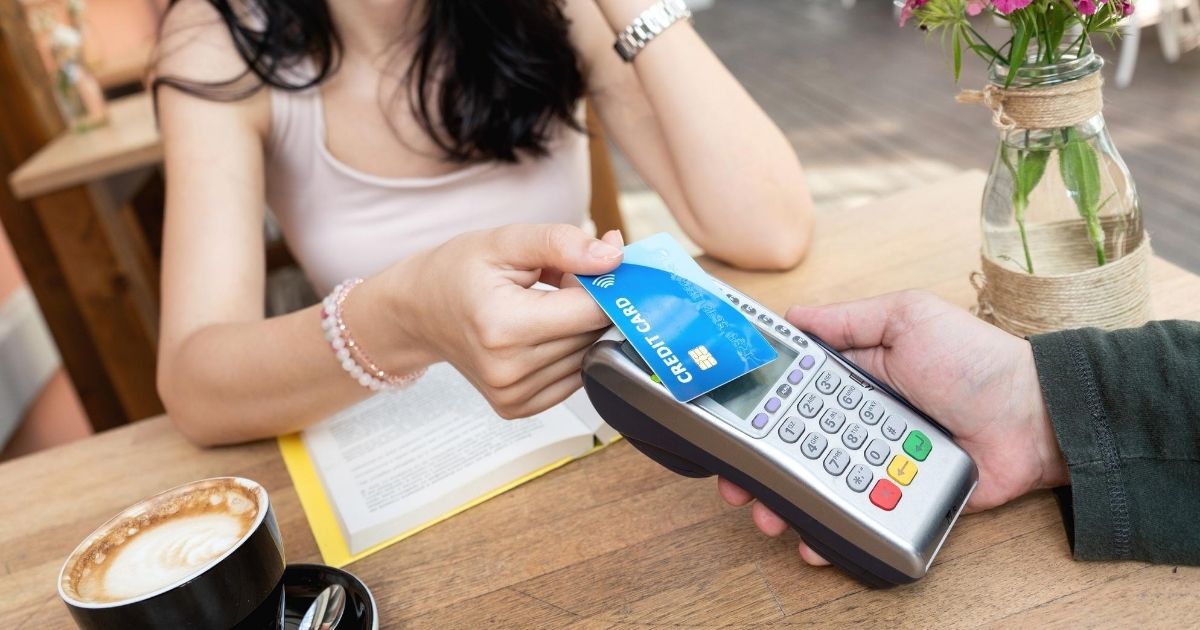In recent months, "contactless payment" has become the big buzzword across the payments landscape. But what does it actually mean, and how does it work? Learn the answers to these questions and more in our guide to contactless payments.
What is Contactless Payment?
As defined by creditcards.com, contactless payments are "payment transactions that require no physical contact between the consumer’s payment device and the physical terminal. To make this type of payment, the consumer holds the contactless card, device, or mobile phone close to the terminal and payment information is communicated wirelessly via radio frequencies."
Contactless payments, also sometimes referred to as "touchless payments," can be made one of two main ways: by a digital wallet or mobile app on a cellphone or other smart device, or by using a touchless payment card.
Digital Wallets/Mobile Apps
Digital wallets store a customer’s payment information on a smart device such as a mobile phone, allowing customers to make payments without a physical credit card in hand. Some of the most popular digital wallets include Apple Pay®, Google PayTM, and Samsung Pay®.
Contactless Payment Cards
In addition to digital wallets, certain cards can also be used for touchless transactions. Rather than having to swipe the card as with magstripe cards, or dip the card as with chip cards, the consumer simply taps the payment card near a point-of-sale terminal that is equipped with contactless technology. For this reason, touchless payments are also often referred to with the phrases "tap to pay" or "tap and go."
Other Payment Methods
Other payment methods that can also be considered touchless payments include card-on-file, where a business keeps a repeat customer’s card information so the customer does not have to present a physical card on each visit, as well as recurring payments, where a customer’s payment method is charged on a recurring basis, such as for subscription purchases.

Contactless Payment Symbol
EMVCo has established two main icons to refer to contactless payments - the contactless payment indicator and the contactless payment symbol. The indicator is depicted as four curved lines. When the indicator is shown on a payment card, it signals that the card can be used to make contactless payments. When it is shown on a card reader, it signals that the reader can be used to accept contactless payments.
The symbol shows the four curved lines and a hand holding a card, surrounded by an oval. It indicates where on the terminal the customer should tap their card or smartphone in order to make a contactless payment.
To view examples of the contactless payment indicator and symbol, visit the EMVCo website.
Which Technology is Predominately Used for Contactless Payment Systems?
Near-field communication, or NFC, is the technology used for touchless payments. NFC allows two devices in proximity to each other to communicate and share data, such as a digital wallet and a card reader. NFC technology is a more finely-tuned version of radio frequency identification (RFID) technology.
Benefits of Contactless Payments
- Security - Touchless payment cards and digital wallets are equipped with multiple security measures, including encryption of card data. Further security can be established by password-protecting any smartphone device that includes a digital wallet.
- Efficiency - Touchless payments are fast and efficient, cutting down on transaction times and helping to make checkout lines move faster.
- Versatility - Touchless payments allow businesses to diversify the payment methods they offer, giving customers a wider variety of payment options.
Is Contactless Payment Safe?
Contactless payment methods have surged in popularity recently, as they are considered a safer way to pay to avoid touching common surfaces. With only one person handling the payment method (smartphone or contactless card), these payment methods avoid the human contact that is involved with the exchange of cash or with handing a regular debit or credit card to a cashier.
From a security point of view, contactless payment methods are also considered safer than more traditional payment methods. Contactless cards use EMV technology, which is more secure than older magnetic stripe (magstripe) technology. Digital wallets use various security measures such as tokenization to protect cardholder data - and users can further protect their device by enabling the password protection feature.
Contactless Payments and ISVs
Independent software vendors should include contactless functionality in their software to provide for the way people want to pay, and to keep themselves competitive.
Global Payments Integrated provides functionality for many different ways consumers want to pay. Contact us today to learn more.
Apple Pay® is a trademark of Apple, Inc. All trademarks contained herein are the sole and exclusive property of their respective owners.
Google PayTM is a trademark of Google, Inc. All trademarks contained herein are the sole and exclusive property of their respective owners. Any such use of those marks without the express written permission of their owner is prohibited.
Samsung Pay® is a registered trademark of Samsung Electronics Co., Ltd.
